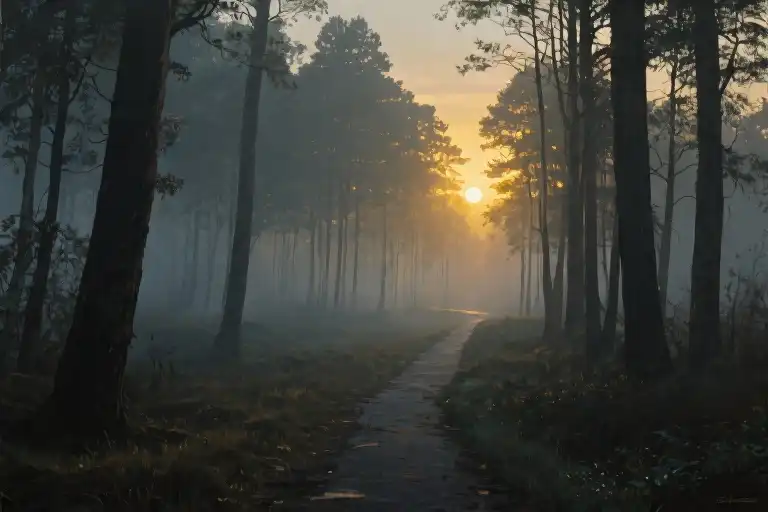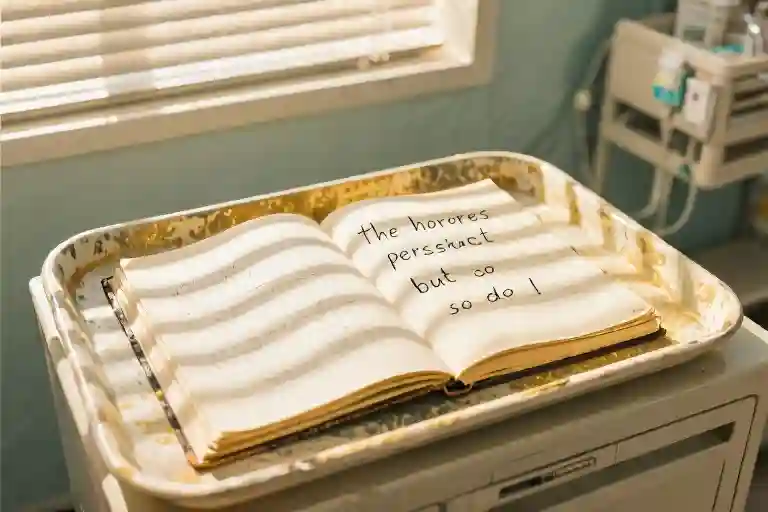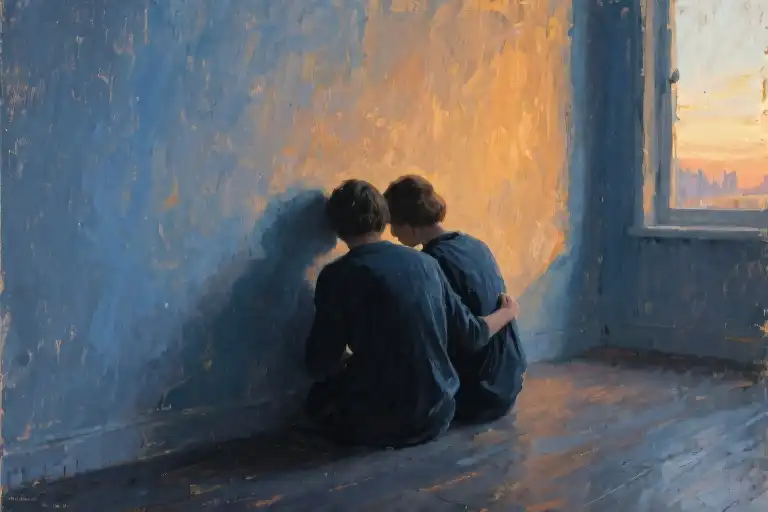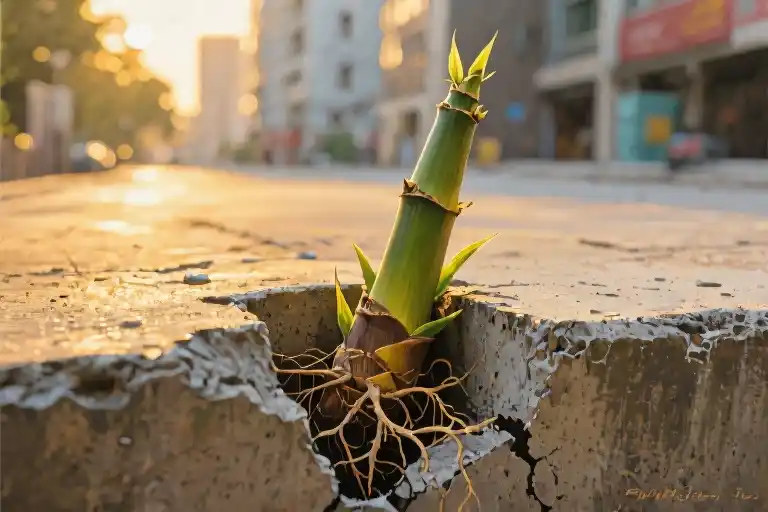The night air carries a particular weight when you’re walking the line between memory and haunting. Not the kind of walk that tires your legs—the kind that wears down your soul, step by invisible step. There’s a thin line between memory and haunting, and some of us find ourselves tracing its edges every night, like fingers along a scar we can’t quite stop touching.
You know this walk if you’ve ever lain awake at three a.m. with yesterday playing behind your eyelids. The way certain memories don’t fade but crystallize, becoming sharper with time rather than softer. They don’t knock politely at the door of your mind; they slip through the cracks in your defenses and make themselves at home in your quietest moments.
Most people think of memories as gentle things—warm nostalgia, fond recollections. But healing painful memories requires acknowledging their teeth. The ones that sit across from you during breakfast, asking questions you thought you’d buried. The ones that follow you to bed and whisper “remember” just as you’re drifting off. Memory and trauma often wear the same face in the dark.
I used to believe good recall was a gift until I realized I wasn’t just remembering—I was being followed by my own life. There’s a version of me still standing in childhood doorways, holding truths too heavy for small hands. She doesn’t speak, but her silence is louder than any words. Emotional memory recovery begins when we stop running from these shadow selves and start asking what they need to tell us.
Silence isn’t always peace. Sometimes it’s the cage we build around what hurts too much to name. We tell ourselves we’re moving on, but the past has a way of slipping through the bars when we least expect it—in the scent of rain on pavement, in the way light falls across a table at a certain hour, in the cadence of a stranger’s laugh. These are the moments when we realize silence and mental health have a more complicated relationship than we imagined.
Yet here’s the paradox: these memories that haunt us are also our proof. Proof we loved deeply enough to hurt this much. Proof we survived what might have broken us. The thin line we walk each night isn’t just between memory and haunting—it’s between what wounded us and what made us. Between who we were and who we’re becoming.
So we keep walking. Not to escape, but to carry all our selves—the joyful and the broken, the silent and the screaming—forward together. The path is narrow, but it’s ours. And that makes all the difference.
When the Past Becomes a Follower
The bedroom door creaks open just enough to let the moonlight in. She stands there again—the girl with my face but not my years, clutching a truth too heavy for her small hands. Every night when the world goes quiet, this younger version of myself appears at the threshold of memory, her unspoken words hanging between us like cobwebs. She doesn’t knock. Haunted things never do.
Memory wears many disguises. Sometimes it’s the phantom presence across your dinner table, tilting its head as you chew your food. Do you remember? it asks through mouthfuls of your present. The roast chicken tastes like hospital food suddenly, the steamed vegetables like cafeteria peas from third grade. You swallow hard. Of course you remember.
Neuroscience explains these sudden invasions—flashbulb memories imprinted during heightened emotional states, the amygdala working overtime to preserve what the conscious mind tries to forget. But science doesn’t prepare you for how these preserved moments grow teeth over time, how they start biting when you least expect it.
Take last Tuesday. You’re stirring honey into tea when the scent transforms into your grandmother’s attic—dried lavender and mothballs. Your hands shake. The spoon clatters. Just like that, you’re nine years old watching her fold cotton dresses into a trunk, the cancer diagnosis still unspoken between you. The memory doesn’t care that you’re thirty-four now with a mortgage and a dental plan. It perches on your kitchen counter swinging its legs, waiting for you to acknowledge its presence.
Most people misunderstand haunting. They imagine floating sheets and rattling chains, not the way your own breath sounds foreign when a childhood memory presses its palm against your throat. Not the way your reflection sometimes splits—the you that exists now, and the you that got left behind in some crucial moment.
That’s the cruelest trick of traumatic recall: it freezes parts of yourself in amber. The girl who still stands barefoot in the upstairs hallway listening to her parents’ muffled shouts. The teenager gripping a steering wheel as the cop’s flashlight approaches. These frozen selves don’t age alongside you. They wait. They watch. They wonder when you’ll finally come back for them.
So you walk the line each night—not to escape these memories, but to visit them on your own terms. You bring small offerings: a cup of chamomile tea for the anxious college version of yourself, a wool blanket for the shivering child after the car accident. These rituals don’t erase the past, but they change how it lives within you.
When memory grows teeth, is silence still safe? Or does the quiet simply give the past more room to gnaw? Tomorrow we’ll examine silence’s double-edged nature—how it can be both cage and sanctuary. But tonight, try this: when your personal ghost appears, meet its eyes. Say I see you. Then pour two cups of tea.
The Duality of Silence: Cage and Sanctuary
Silence wears many faces. Some nights it wraps around you like a weighted blanket, the kind that soothes restless limbs. Other times, it presses against your ribs like iron bars, each breath a reminder of words never spoken. This is the paradox we rarely discuss—how the same absence of sound can be both prison and refuge.
The Escape Artist’s Silence
I used to mistake busyness for bravery. The clink of ice in a glass became my lullaby, the glow of screens my nightlight. There’s a particular flavor to this kind of silence—the metallic aftertaste of avoidance. You’ll recognize it by how your hands stay occupied (scrolling, stirring, shuffling papers) while your mind runs in circles. Psychologists call it ‘experiential avoidance,’ but in the midnight hours, it just feels like drowning in slow motion.
The telltale signs:
- Replaying conversations you’ll never have
- Craving background noise like oxygen
- That hollow ache behind your sternum when the music stops
The Alchemist’s Silence
Then there’s the other kind. The one that smells like old paper and tastes like ink. This silence doesn’t numb—it illuminates. When I finally faced the blank page (really faced it, without reaching for my phone or the wine bottle), something unexpected happened. The memories didn’t attack; they unfolded. That childhood version of me stopped glaring and simply sat beside my writing desk, her truth no longer a weapon but a shared burden.
Try this tonight:
- Set a timer for 7 minutes (long enough to unsettle, short enough to endure)
- Write one sentence that begins with “What if I told you…”
- Notice where your body tenses—that’s where the real story lives
Your Turn: Cage or Door?
Here’s the question we’ve been circling: Does your silence confine or liberate? Don’t answer immediately. Instead, pay attention to what happens in the pause after you read this. Do your shoulders creep toward your ears? Does your jaw clench? Or do you feel… curious? That physical response is your compass.
For cage-like silence:
- Start small: Hum a single note out loud
- Name three textures you can touch right now
- Whisper: “This is hard, and I’m still here”
For door-like silence:
- Ask your memory one gentle question (“What do you need me to know?”)
- Trace the outline of your non-dominant hand—the one that feels unfamiliar
- Breathe in for 4 counts, hold for 7, exhale for 8
When the Bars Begin to Bend
That moment when silence cracks? It sounds like nothing you’ve ever heard. Maybe it’s the rasp of pencil on paper at 3 AM. Maybe it’s your own voice saying aloud what you’ve hidden for years. However it arrives, this is when the extraordinary happens—your memories stop being specters and start being witnesses. They don’t disappear; they step forward to say, “Yes, this happened. And you’re still standing.”
Tonight, when the quiet feels heavy, try this: Place one palm flat against your chest. Feel the heartbeat? That’s the sound of the cage breaking. Not with a roar, but with the quiet persistence of a life insisting on being lived.
Walking the Line: Rebuilding Yourself on the Border
The Letter You Never Sent
There’s an exercise therapists often recommend that sounds deceptively simple: write a letter to your younger self. Not the polished, inspirational kind you see framed on social media, but the raw, ink-smudged version you’d scribble at 3 AM when the memories grow teeth.
I tried it last winter. My hands shook holding the pen, because the girl I was addressing—the one still standing in that childhood room—deserved more honesty than I’d ever allowed myself. I wrote about the lies we both believed, the silences we mistook for safety. At one point, the pen tore through the paper when I described how her clenched jaw still lives in my shoulders today.
Here’s what no one tells you about this exercise: The power isn’t in receiving answers (you won’t). It’s in finally giving your past self the witnessing they were denied. When I wrote “I see now how heavy that truth was for your small hands”, something in my chest unknotted—not because the memory changed, but because I’d stopped arguing with its existence.
Mindful Observation: Watching Memories Like Clouds
Traditional meditation never worked for me until a therapist rephrased it: “Don’t try to silence the memories; observe them like weather patterns.” This became my method when haunting memories played on loop:
- Name the sensory details (e.g., “This memory smells like hospital antiseptic and tastes like stale airport coffee”)
- Notice where it lives in your body (a vise around ribs? icy fingertips?)
- Whisper: “This happened. It’s not happening now.”
At first, it felt absurd talking to my own brain. But over time, I noticed something revolutionary: Memories that were observed rather than feared lost their sharp edges. The childhood room didn’t disappear, but the girl in it stopped staring accusingly. Sometimes she even sat cross-legged, waiting for me to join her.
The Archaeology of Survival
Every culture has its way of honoring relics—pottery shards, arrowheads, yellowed letters. We preserve them not because they’re useful, but because they’re evidence. Your painful memories serve the same purpose. That recurring nightmare about running through endless hallways? It’s a clay tablet inscribed with “Here lies someone who kept moving despite exhaustion.” The flinch when someone raises their voice too fast? A fossilized imprint of your nervous system’s ingenuity.
This perspective shift was my turning point: What if these memories aren’t following you—they’re artifacts you’re carrying? Not all museums display cheerful exhibits. The darkest corners hold the most telling proof of survival.
Where the Line Ends
The last time I walked that thin nighttime border, something unexpected happened. Instead of watching my feet to avoid slipping into memory or despair, I looked up. Faint light outlined the horizon—not the dramatic sunrise of movie endings, but the first tentative blue of morning. It occurred to me then: The line we walk isn’t a tightrope. It’s a seam. And seams, by definition, join things together.
So tonight, when the memories pull at your sleeve, try this: Carry them forward instead of fighting their grip. Not toward some imagined finish line, but toward the next step, and the next. The path isn’t behind or ahead—it’s wherever your feet meet the ground while holding all that you are.
One step. Then another. The light will come.
The Path Beyond the Line
The night air carries a different weight now. Where there were once echoes, there are now whispers. Where shadows loomed, now there are silhouettes softened by moonlight. You still walk that thin line between memory and haunting—but your footsteps have changed. They no longer drag with exhaustion; they mark deliberate progress, one after another, into territory that once felt impossible to traverse.
That childhood version of yourself still stands in the corner of your old room, but she no longer clutches the unspoken truth like a weapon. The weight has been redistributed—some laid gently at the feet of therapists, some transformed into ink on journal pages, some carried in shared silence with others who understand this nightly pilgrimage. Her stare has softened into recognition: you are both survivors holding proof of the same story.
Every evening when the world quietens, you continue your walk. Not to outpace the memories, but to accompany them differently. The dinner table interrogations have become conversations. The clawing has given way to an uneasy truce—not because the pain has vanished, but because you’ve learned to hold space for both the ache and the healing simultaneously.
Memory no longer slips through cracks uninvited. You’ve learned to open windows deliberately, airing out rooms long shuttered. The sepia-toned recollections coexist with the sharper ones now, all part of the same mosaic. What you once called haunting now feels more like an ongoing dialogue—a difficult but necessary conversation across time.
Take this with you tonight: one step forward. Then another. The line remains thin, but your balance has improved. You’ve learned to carry the light and shadows not as opposing forces, but as complementary truths about survival. That childhood room still exists within you, but so does every version of yourself that grew beyond its walls.
And when you pause to look back—not in fixation, but in acknowledgement—you’ll notice something remarkable. The path you’ve walked is no longer just a precarious line. It has widened, through sheer persistence, into a trail. Behind you: proof of progress. Before you: undiscovered territory where memories can exist without being hauntings.
The horizon holds an unspoken promise. Keep walking.
The line continues. So do you.





